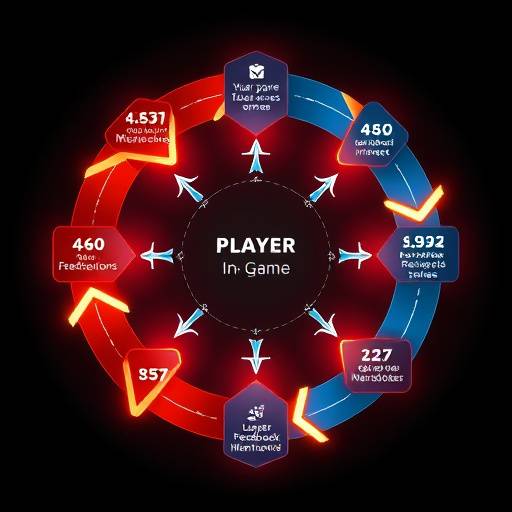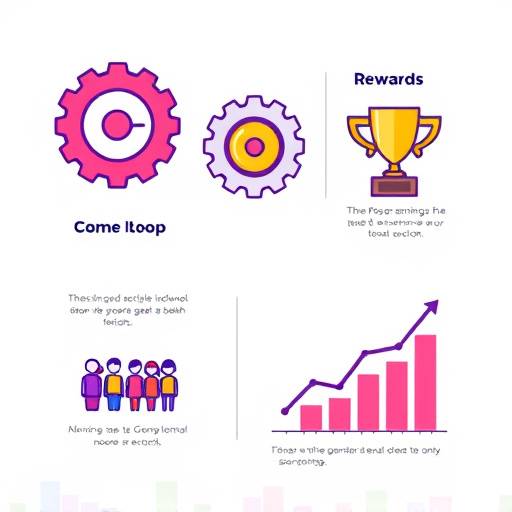The Pillars of Player Engagement: Crafting Lasting Connections
In the hyper-competitive arena of video games, player engagement is not merely a metric; it's the very foundation upon which successful titles are built. It represents the depth of a player's connection to a game, the duration of their investment, and the propensity for their return. Game developers, acting as architects of virtual worlds, employ a nuanced spectrum of strategies, deeply rooted in behavioral psychology and the principles of the attention economy, to cultivate and sustain this crucial engagement. These strategies transcend simple entertainment, aiming to forge experiences that resonate profoundly, offer consistent perceived value, and evolve into ingrained habits. The ultimate aspiration is to transcend ephemeral enjoyment and foster enduring interest, transforming casual participants into active, invested members of a thriving game community. This section meticulously dissects the core pillars that underpin potent player engagement, offering invaluable insights into the design philosophies that captivate millions and drive persistent play across the globe. The strategic application of these principles is what differentiates a fleeting pastime from a deeply immersive and long-lasting digital experience.

The efficacy of these engagement mechanisms stems from their capacity to tap into fundamental human psychological drives: the innate desire for achievement and mastery, the profound need for social connection and belonging, the intrinsic curiosity that fuels the pursuit of novelty, and the deep satisfaction derived from palpable progress. When these core needs are effectively addressed and gratified within the context of a game, players naturally become more invested, leading to extended play sessions, increased session frequency, and significantly higher long-term retention rates. A thorough comprehension of these underlying psychological drivers is therefore indispensable for developers striving to create experiences that are not only inherently enjoyable but also profoundly meaningful and enduring. The relentless march of innovation within game design ensures that these engagement mechanics are in a perpetual state of refinement and imaginative application, continuously pushing the boundaries of what is achievable in the realm of interactive entertainment and forging deeper connections with players.
Core Engagement Mechanics: The Architect's Toolkit
Compelling Gameplay Loops
At the very nucleus of player engagement lies the meticulously crafted gameplay loop—the repeating cycle of actions players undertake and the consequent rewards they receive. A strategically designed loop is inherently satisfying, provides unambiguous objectives, and instills a palpable sense of forward momentum. This can manifest in diverse forms: the classic 'explore-fight-loot-upgrade' sequence prevalent in many role-playing games, the 'build-defend-attack' rhythm that defines strategy titles, or the simple yet addictive 'match-clear-score' progression in puzzle games. Each iteration within this loop is engineered to be intrinsically rewarding or to serve as a stepping stone towards an anticipated future payoff, thereby minimizing potential friction points and maximizing the player's investment of both time and cognitive effort. The elegance of a truly successful gameplay loop resides in its ability to become almost an intuitive, second-nature behavior, allowing players to transcend the mechanics and focus on higher-level strategic thinking, skill refinement, and emergent gameplay experiences. Its design prioritizes immediate, positive feedback and introduces escalating challenges or rewards to sustain player interest over extended periods.
Progressive Reward Systems
The human brain is hardwired to respond dynamically to rewards, and games expertly harness this biological imperative through sophisticated reward systems that acknowledge player effort and celebrate achievements. This encompasses a broad spectrum, including experience points (XP) that signify growth, level-ups that unlock new capabilities, in-game currency for resource acquisition, cosmetic items for personalization, new abilities that expand gameplay options, and the overarching narrative progression that fuels story momentum. Variable rewards, dispensed at unpredictable intervals, are particularly potent in fostering persistent engagement, mirroring the psychological effects observed in contexts like slot machines. The sheer anticipation of a rare item drop, the excitement of reaching a significant milestone, or the satisfaction of unlocking a powerful new skill keeps players invested and actively seeking the next reward. These rewards function not merely as motivators but as tangible indicators of a player's journey and accomplishments within the game's expansive ecosystem, reinforcing their commitment and encouraging continued exploration and effort.
Narrative Immersion and Storytelling
A meticulously crafted and compelling narrative serves as a formidable anchor, drawing players deep into the fabric of a game's world and providing a powerful impetus to witness the story's unfolding conclusion. This involves the artful creation of rich, intricate lore, the development of relatable and compelling characters, and the weaving of engaging plotlines that capture the imagination. Interactive storytelling, where player choices possess genuine and observable consequences that shape the narrative's trajectory, further deepens this sense of immersion and agency. The emotional investment players develop in characters and plotlines often translates directly into a more profound and enduring commitment to the game itself. The narrative provides essential context and meaning to the player's actions, elevating a sequence of mechanics into a truly memorable and impactful experience. Well-executed narratives can forge powerful emotional bonds, making players eager to explore every nook and cranny of the game world and unravel its dramatic mysteries. The capacity for players to actively influence the narrative arc enhances their sense of agency and personal stake in the unfolding events.
Social Integration and Community Building
Modern video games increasingly function as vibrant social ecosystems, and features that actively facilitate interaction, collaboration, and competition among players are absolutely vital for sustained engagement. This includes robust multiplayer modes that allow for synchronous play, intricate guild systems that foster teamwork and shared goals, comprehensive friend lists for easy connection, intuitive chat functionalities for communication, and visible shared achievements that highlight collective accomplishments. The fundamental human desire for social connection and the inherent drive for belonging are powerful motivators, encouraging players to dedicate more time and energy to games where they have established meaningful social ties. Engaging in gameplay with friends, striving to outmaneuver rivals in competitive arenas, or contributing to a guild's collective success can be as intrinsically rewarding as achieving personal in-game milestones. These social elements create a persistent, compelling reason to log in regularly, fostering a robust sense of community and shared purpose that transcends the core gameplay mechanics and enriches the overall player experience.
Goal Setting and Progression Systems
The establishment of clear, attainable goals and the provision of visible, tangible progress are fundamental cornerstones for maintaining sustained player motivation. Games typically present players with a layered hierarchy of objectives, ranging from immediate, short-term goals—such as completing a specific mission or overcoming a challenging encounter—to more ambitious, long-term aspirations—like mastering a complex skill set, reaching the pinnacle of a competitive ranking system, or achieving a rare in-game feat. Visual indicators of progress, such as dynamically filling experience bars, intricate skill trees that expand player capabilities, and comprehensive achievement trackers that gamify accomplishments, provide players with a constant, reinforcing sense of advancement and personal growth. This structured approach to progression offers players a clear sense of direction and a concrete understanding of how their dedicated efforts directly translate into tangible development and increasing power within the game's universe. The psychological impact of witnessing consistent progress, particularly after successfully navigating significant challenges, serves as a potent reinforcer of continued engagement and investment.
Scarcity and Timeliness: The Urgency Factor
The strategic deployment of limited-time events, daily login bonuses that encourage consistent return, and the introduction of scarce, highly sought-after in-game items effectively tap into players' innate psychological responses to scarcity and their fear of missing out (FOMO). These mechanics cultivate a palpable sense of urgency and actively encourage players to log in regularly to capitalize on unique opportunities and acquire exclusive content. The psychological principle of scarcity posits that limited availability inherently increases desirability, thereby driving players to engage more frequently and with greater intensity to obtain these valuable assets or participate in time-sensitive activities. These elements are typically calibrated with meticulous care to be enticing and motivating without becoming overwhelming or exploitative, thereby fostering consistent interaction and cultivating an exciting atmosphere of urgency and anticipation that enhances the overall player experience.

The Psychology of Sustained Engagement: Beyond the Fun
The most enduringly successful games demonstrate a profound understanding that player engagement is not merely an emergent property of enjoyable mechanics but rather the intricate result of a complex interplay of subtle psychological triggers and cognitive biases. Developers adeptly leverage established principles such as operant conditioning, where player behaviors are carefully shaped through strategic reinforcement schedules. The aforementioned variable ratio schedules are a prime illustration of this technique. Furthermore, games often integrate elements that actively foster a sense of autonomy (empowering players with meaningful choices), competence (facilitating the development of skills and a feeling of mastery), and relatedness (promoting social connection and belonging). The concept of 'flow state,' famously described by psychologist Mihaly Csikszentmihalyi—a state of complete immersion and energized focus in an activity—is a primary objective for astute game designers. Achieving this optimal state typically requires a delicate balance between the perceived challenge of the task and the player's skill level, coupled with clear objectives and immediate, unambiguous feedback—all hallmarks of exceptionally well-designed game experiences. By meticulously orchestrating these diverse psychological elements, games engineer experiences that are not only pleasurable in the immediate moment but also compelling and habit-forming enough to warrant sustained attention and repeated play, forging deep-seated player habits and cultivating unwavering brand loyalty.
“Effective player engagement is not about trickery, but about consistently delivering intrinsic value. It’s about respecting the player’s time and intelligence by creating challenges that are rewarding, social connections that are meaningful, and worlds that are worth exploring again and again.”
The continuous evolution within game design, propelled by advancements in technology and an ever-deepening understanding of player psychology, portends the emergence of even more sophisticated and nuanced engagement strategies in the future. The paramount challenge for developers lies in navigating the fine line between innovating for deeper engagement and ensuring that these mechanics serve to enhance the player experience ethically and sustainably, without resorting to exploitative practices. The ultimate goal is to cultivate games that players are genuinely drawn to engage with, rather than feel obligated or coerced into playing, thereby fostering a positive, mutually beneficial, and enduring relationship with digital entertainment for years to come. This commitment to player well-being and respectful design is critical for the long-term health and integrity of the gaming industry.